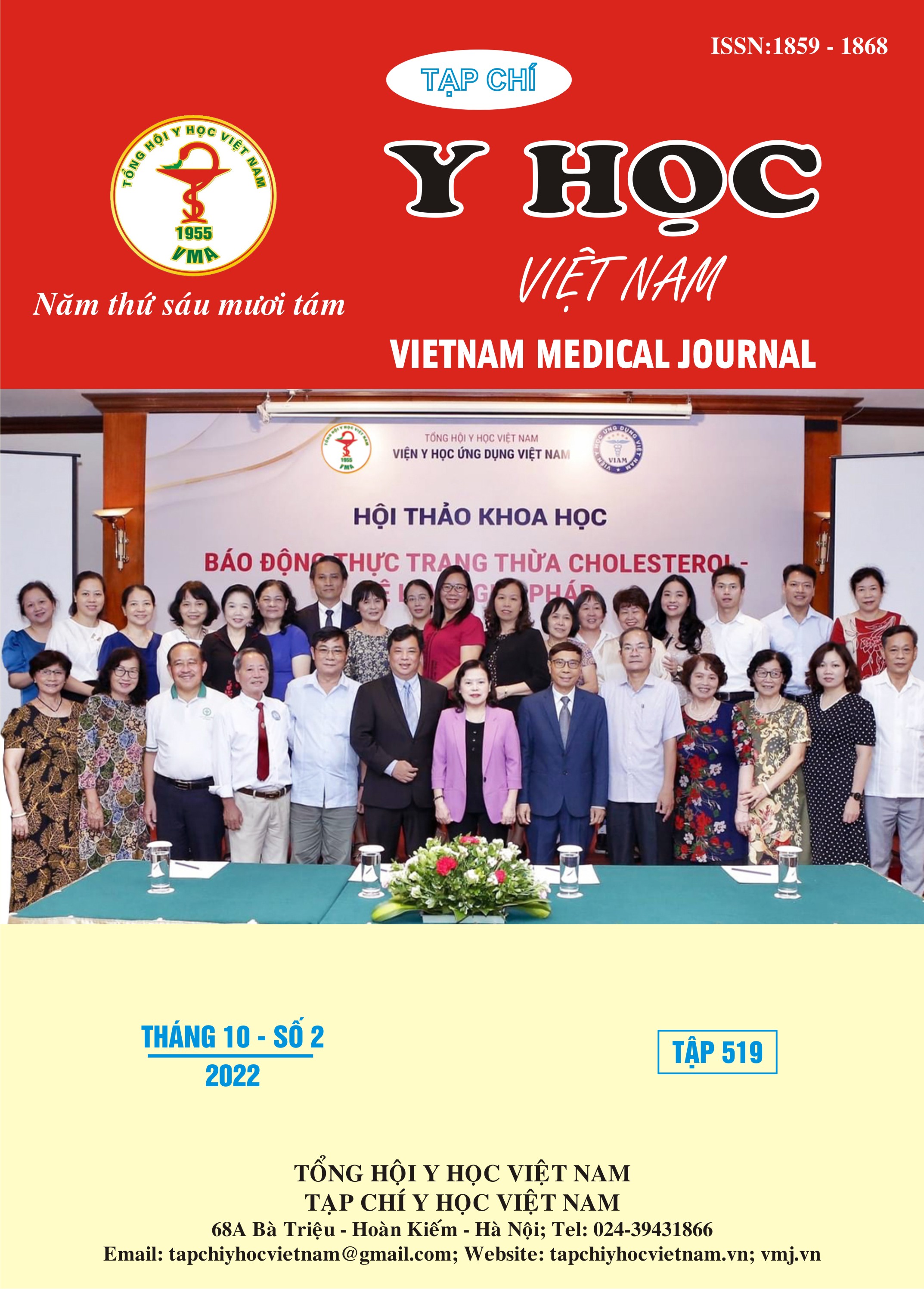CLINICAL, RADIOLOGICAL CHARACTERISTICS AND TREATMENT EFFECT OF HUMERAL PSEUDARTHROSIS AFTER SURGERY AT VIET DUC HOSPITAL
Main Article Content
Abstract
Purposes: Describe the clinical, radiological characteristics and evaluate the effectiveness of treatment of patients with humeral pseudarthrosis after surgery. Subjects and methods: a retrospective and prospective cross-sectional study on 48 patients with humeral pseudarthrosis complications after previous surgical treatment or procedures, who came to the clinic for examination and surgical treatment at the Department of Trauma and Orthopedics, Viet Duc Hospital from April 2016 to March 2019. Results: Most of the patients were men of working age. Closed fractures are more common than open fractures, and hypertrophic pseudarthrosis is more common than atrophic pseudarthrosis. Pain and limited range of motion are the main symptoms. Most patients develop pseudarthrosis joints after only 1 intervention or surgery. After surgery, 70.8% of patients had no pain. The proportion of patients with straight humerus on X-ray before and after surgery increased from 16.7% to 97.9%. 89.6% bone healing reached a good level, only 1 case did not heal. Conclusion: The majority of patients with humeral prosthesis are men of working age, with a previous injury that is a closed 1/3 lower humeral fracture. 75% of prosthetic joints are hypertrophic. All patients had previous surgical treatment or procedures, of which 72.9% were screwed, but the symptoms of pain, limitation of motion and flexion of the limb were still affected. After surgery, 89.6% of cases had very good results and no patient had complications afterwards.
Article Details
Keywords
pseudarthrosis, humeral sharp fracture, surgery
References
2. Burwell RG., Urist MR. “Bone grafts, derivatives and substitutes”, Butterworth: Heinmann, 1994.
3. Dimitriou R., Kanakaris N., Soucacos P. N. et al. "Genetic predisposition to non-union: evidence today", Injury, 44 Suppl 1, 2013, pp: S50-3.
4. Emara K. M., Diab A. R., Emara K. A. "Recent biological trends in management of fracture non-union", World journal of orthopedics, 6(8), 2015, pp: 623-628
5. Judet R., Judet J. "L'osteogene et les retards de consolidation et les pseudarthroses des os longs", Huitieme Congress SICOT, 1960, pp: 15.
6. Michalis P., Ippokratis P., Elena J. et al. “Biological and molecular profile of fracture non-union tissue: current insights”, Journal of cellular and molecular medicine, 19(4), 2015, pp: 685-713.
7. Phemister D. B."Treatment of ununited fractures by onlay bone grafts without screw or tie fixation and without breaking down of the fibrous union", J Bone Joint Surg Am, 29(4), 1947, pp: 946-60.
8. Santolini E., West R., Giannoudis P. V. "Risk factors for long bone fracture non-union: a stratification approach based on the level of the existing scientific evidence”, Injury, 46 Suppl 8, 2015, pp: S8-S19.


